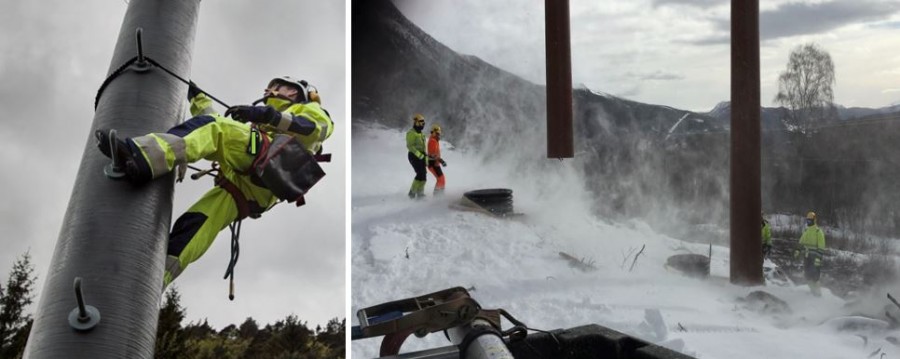OPS utility power poles have a complete product range from low voltage and up to 132kV transmission lines.
OPS utility power poles are:
Strong – Well known behaviour of composites and controlled production means the design can be made extremely strong.
Flexible – Composite masts will bend significantly under extreme load without breaking, increasing the survival rate under extreme conditions.
Lightweight – Ease and speed of installation, e.g., enabling installation of double/triple poles in one helicopter lift. Lower weights also lowers occupational health risk during installation.
Predictable – Well known and consistent behaviour of the materials – over time, temperatures, humidity, etc. – means the pole will have consistent abilities to take necessary loads and enables the use of a flexible and module based system.
Long life – Designed for 80+ years service life as composites have extreme fatigue resistance. Also, tests show no effect from UV.
Impact resistant – Although thin walled, the added safety factors and tough coating, means the poles can withstand impacts without being permanently damaged. Especially exposed poles can be made with added bracing (OPS Tough poles) to withstand larger impacts.
Repairable on site – Most damages, can easily be repaired on site.
Electrical insulator – Lowering HSE risk and risk of power to ground.
Maintenance free
Flexible production – Production on demand due to short set-up of production and production time.
Low environmental impact caused by locally supplied glass fibre produced by hydro power, design suited for efficient transport, long life, no risk of contamination throughout the lifetime.
